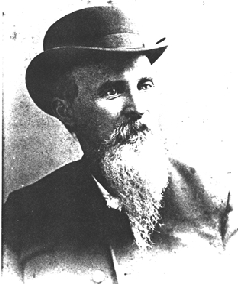- Alfred Shea Addis
Infobox Person
name = Alfred Shea Addis
image_size =
caption =
birth_date = 1832
birth_place =Philadelphia
death_date = 10 September 1886
death_place =Chihuahua, Mexico
death_cause = Gunshot wound
resting_place =
resting_place_coordinates =
residence =
nationality = American
known_for = Photography
occupation = Photographer
spouse = Sarah Short
children =Yda Hillis Addis , Judge Addis
website =
footnotes =Alfred Shea Addis, also known as A. S. Addis (1832-10 September 1886) was an American Western itinerant
photographer , mostly known for photographs ofKansas ,Mexico and the American Southwest.Early life
Born in
Philadelphia , Alfred Shea Addis migrated toLawrence, Kansas in 1850. He worked as a photographer’s assistant for Thomas Short, quickly learning the art of photography and gradually securing his own clients under Short's guidance. Addis later married Short's daughter, Sarah. The Addises had two children,Yda Hillis Addis (born 1857) and Judge Addis (born 1862). The families were Confederate sympathizers. When the situation in Lawrence became too violent, the Addises and the Shorts moved toLeavenworth, Kansas , where they lived near the protection of the fort.Fort Leavenworth
Addis started his own photography business. He advertised "Photographs,
Ambrotype s, Melainotypes. Photographs framed in Superior style. Pins and Lockets filled in best style. Call and give me a trial." ["Leavenworth the Weekly Inquirer" Thursday Morning, April 17, 1862] At night he managed the Union Theater which he later purchased. As the potential for civil war heated up, the abolitionists increased their stronghold in Leavenworth and violence broke out there whenMissouri seceded from the Union in November 1862, prompting Brigadier GeneralJames G. Blunt to proclaim martial law. In August 1863 the pro-slaverybushwhacker William Quantrill led a massacre of pro-Union citizens at Lawrence. [James M. McPherson, "Battle Cry for Freedom: The Civil War Era", New York, Oxford University Press, 1988] Addis gave a benefit performance at the Union Theater, with the proceeds to go to the Lawrence victims. In January 1864, abolitionists burned down the Union Theater. The Shorts and the Addises, along with their slaves, fled to northernMexico .Mexico
The Addises and Shorts first went to
Chihuahua , where they found other Confederate sympathizers. Addis took photographs of the Mexican landscapes and the indigenous people and sold his cartes de visit to art dealers in New York. When he scouted for wilderness landscapes and exotic vistas to photograph, he often took along his daughter Yda to translate the Indian and Spanish languages to English. Addis moved his family further south into Mexico, looking for new views of native people and the country. By mule train the family migrated toMazatlán andHermosillo . After the Civil War ended, Addis took his family aboard the sailing ship "The Orizaba" forCalifornia .Return to America
In California, the Addises and the Shorts lived in a house located on Bunker Hill in
Los Angeles . His children attended school in the small Los Angeles School House. The women kept house and took in boarders.When Addis heard of veins of gold and silver in
New Mexico andNevada , he left Los Angeles for the mines, photographing Indian tribes and buying real estate along the way. When he moved toTucson, Arizona , he became the territorial marshal. His son, then a young man, joined his father in Tucson. A thief who robbed Addis fled to Mexico but was tracked to , Chihuahua, Mexico by Addis and his son. Addis was shot by the thief and died the following day.Legacy
Although Addis was a prolific photographer, only 15 of his cartes de visit and photographs still exist.
References
Wikimedia Foundation. 2010.
